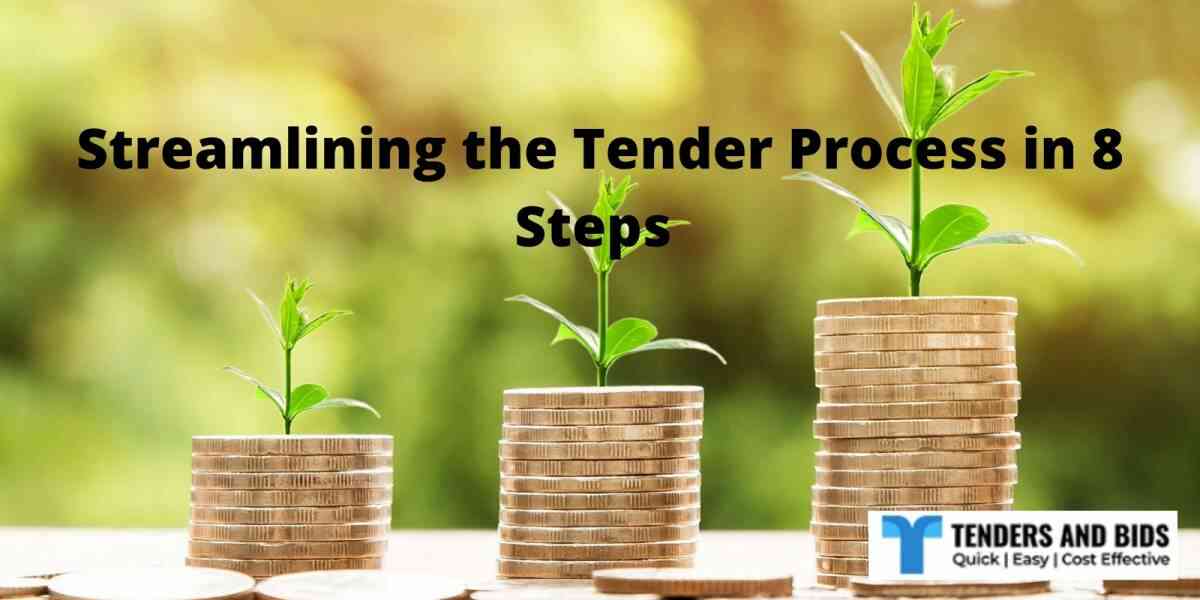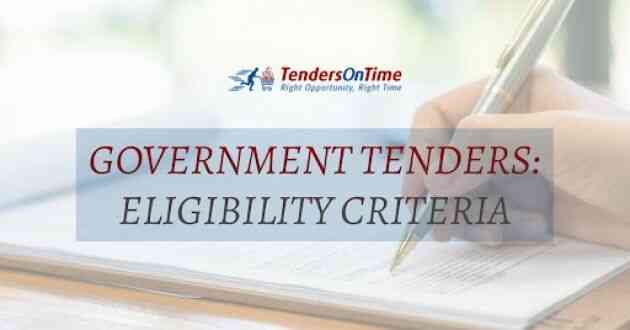Streamlining The Tender Process In 8 Steps

For anyone new to tendering, the process can be unsettling at first, so it’s important to understand the various stages.
For anyone new to tendering, the process can be unsettling at first, so it’s important to understand the various stages in the lifecycle of a Request For Tender (RFT). Nearly 1 in 5 public tenders in the market are published through our portals and the chances are you’ll become part of our tendering community at some point of time. Find out how a subscription can help you get a head start on what can be a lengthy process, and gain awareness into beating your competition.
Below are the easy given steps in the process of tendering:
1. Buyer Lists a Request For a Tender:
Tenders published outside of our portals, such as in newspapers or on a government website, are added to our database by our dedicated research team, who monitor thousands of sources across the entire Australasian market every day. Opportunities are published through their e-procurement portals, or our casual advertising portal, AdCentre. These are stored directly in our tender database.
2. Get Informed or Search for the Tender:
If you already hold a TendersAndBids subscription, you’ll automatically receive an email notification of any new public tenders which match the category, location, and/or keywords in your search profile, so that you have full coverage of your industry and can start preparing your response immediately.
If you don’t hold a subscription, you can search our Buyer Partners, register to each portal for free, and receive notifications whenever they list a new opportunity.
3. Plan and Get Ready:
Make a well-informed decision to bid or not to bid, and make sure you elucidate anything you’re unsure of – our portals include an online forum where you can ask Buyers questions publicly or privately. Download all the tender documents, read carefully and ask yourself; does the contract fit your business strategy or not and then make the final call.
4. Write your Tender Response:
Your response should contain things like a cover page, executive summary, qualitative schedules (answering questions), quantitative schedules (proposed pricing), references, and any appendices. Also, do remember to proof-read and ensure your bid is compliant – while this isn’t necessarily what wins tenders as it can certainly lead you to be disqualified based on a technicality or missed requirement.
5. Submission of your Tender Response:
Submit your tender response on time or preferably early, in case anything goes wrong or files are slow to be uploaded. In most cases, tender submissions received after the nominated closing date/time are treated as non-compliant and will not be considered valid. These days, most bids are needed to be uploaded electronically, as opposed to submitting physical documents to a tender box. Most of the buyer partners require submissions through their portals, while other buyers may require us to submit the response through their website or via email. Either way, it is a good idea to compress or ‘zip’ your files, as many electronic tender boxes have a size limit for uploaded documents.
6. Buyer Assesses the Submissions:
We may be invited to attend a post-tender interview to give further details and clarification of your ability to carry out the work, or be given the opportunity to negotiate on price or time frames which is of high benefit. The buyers evaluate the submission on a number of aspects, such as capability and competence, relevant prior experience, competitive pricing, value for money and compliance.
7. Buyer Awards the Tender:
The buyer will award the tender to whichever company that best meets their evaluation and scoring criteria. Our buyer partners will often award tenders directly through their portal, sending an email notification to both successful and unsuccessful applicants, then following up with the contract. Occasionally buyers may prefer to make contact via phone call, or sometimes meet in person.
8. The Contract Kicks Off:
Congratulations! We have now got our hands full with the current work to complete, it is still an important time to be aware of the upcoming opportunities, so you can have a sight of the future work when the current contract comes to an end.
This is a detailed process with lots of moving parts, which normally takes around 2-8 weeks, but this can take as little as just a few days, or as long as twelve months on some occasions to get from the tender being listed to the Supplier finally commencing work. So whether you’re new, or you’ve tendered for years, it’s important to always stay a step ahead of the competition. That’s why we need to know about the new opportunities well in advance, and be proactive even if we don’t need work for a few months down the line.
TendersAndBids gives you the best chance of being notified about the opportunities in your industry without any manual searching, so you can get a jump start on lining up future work for weeks or months down the line. We offer Global Tenders, RFP, E-Procurement notices worth Millions @ Just USD 1/Notice!


